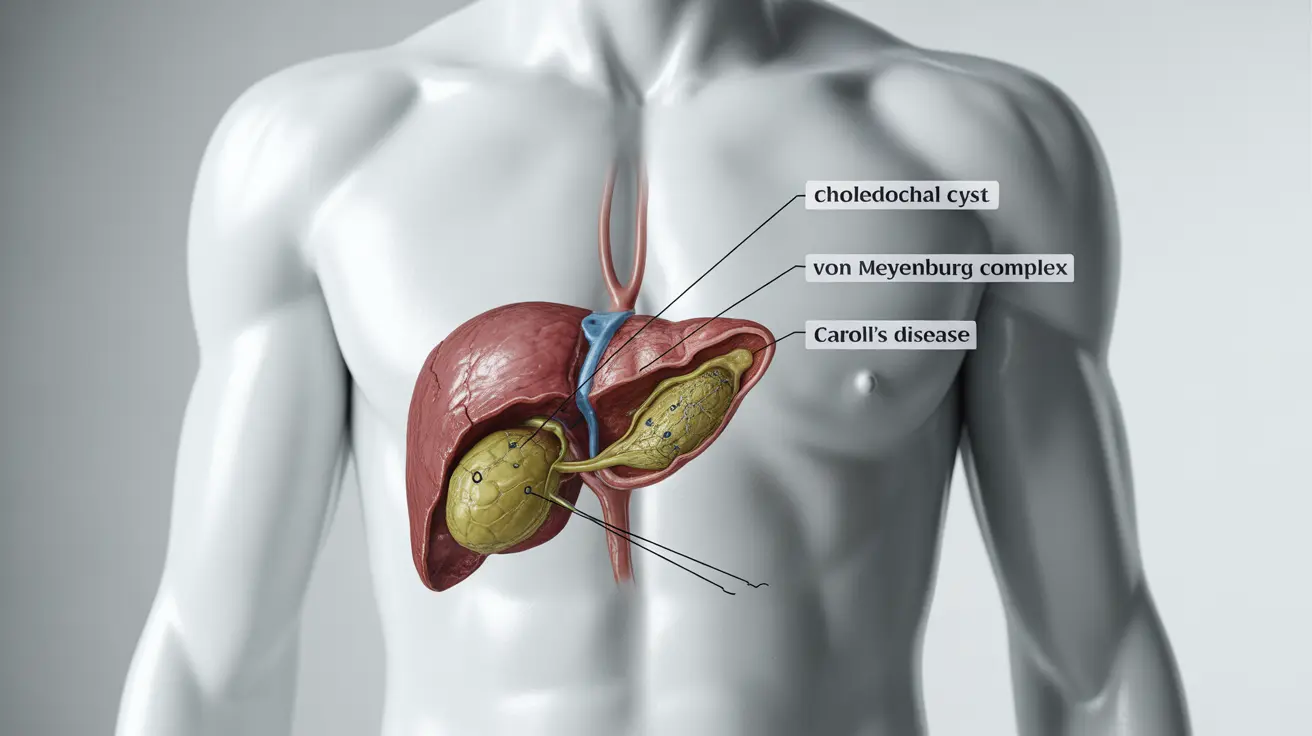Biliary cysts, also known as bile duct cysts, are rare but serious congenital abnormalities affecting the bile duct system. These fluid-filled sacs can develop anywhere along the bile ducts, potentially causing severe complications if left untreated. Understanding the condition's symptoms, diagnosis methods, and treatment options is crucial for better health outcomes.
While these cysts can affect people of any age, they are most commonly diagnosed during childhood or early adulthood. Early detection and proper medical intervention are essential for preventing long-term complications and ensuring optimal patient care.
Understanding Biliary Cysts and Their Types
Biliary cysts are abnormal dilations of the bile ducts that can occur in different locations throughout the biliary system. These cysts are typically classified into five main types based on their location and characteristics:
- Type I: Cystic dilation of the common bile duct
- Type II: Diverticulum of the common bile duct
- Type III: Choledochocele
- Type IV: Multiple cysts throughout the biliary system
- Type V: Multiple intrahepatic cysts (Caroli disease)
Signs and Symptoms
The manifestation of biliary cysts can vary significantly among individuals, with some experiencing minimal symptoms while others face more severe complications. Common symptoms include:
- Abdominal pain, particularly in the upper right quadrant
- Jaundice (yellowing of the skin and eyes)
- Fever
- Nausea and vomiting
- Abdominal mass
- Dark urine
- Clay-colored stools
Diagnostic Procedures
Accurate diagnosis of biliary cysts requires a combination of imaging techniques and clinical evaluation. Healthcare providers typically employ several diagnostic tools:
Imaging Studies
- Ultrasound
- Magnetic Resonance Cholangiopancreatography (MRCP)
- Computed Tomography (CT) scan
- Endoscopic Retrograde Cholangiopancreatography (ERCP)
Laboratory Tests
- Liver function tests
- Complete blood count
- Coagulation profile
Treatment Approaches
The primary treatment for biliary cysts is surgical intervention. The specific approach depends on the type, size, and location of the cyst, as well as the patient's overall health condition.
Surgical Options
Complete surgical removal of the cyst and reconstruction of the biliary system is typically recommended. This may involve:
- Cyst excision
- Hepaticojejunostomy
- Liver transplantation (in severe cases)
Complications and Long-term Outlook
Untreated biliary cysts can lead to several serious complications:
- Cholangitis (bile duct infection)
- Pancreatitis
- Liver cirrhosis
- Biliary stone formation
- Increased risk of cholangiocarcinoma (bile duct cancer)
Frequently Asked Questions
- What are the common symptoms and signs of biliary cysts or bile duct cysts?
Common symptoms include abdominal pain (especially in the upper right quadrant), jaundice, fever, nausea, vomiting, and the presence of an abdominal mass. Some patients may also experience dark urine and clay-colored stools.
- How are bile duct cysts diagnosed and what imaging tests are used?
Diagnosis typically involves various imaging techniques, including ultrasound, MRCP, CT scans, and ERCP. These tests help determine the size, location, and type of cyst present. Laboratory tests are also used to assess liver function and overall health.
- What causes biliary cysts and are they inherited or congenital?
Biliary cysts are primarily congenital conditions, meaning they are present at birth. While not directly inherited, they develop during fetal development due to abnormal bile duct formation. The exact cause remains unclear, but genetic factors may play a role.
- What are the treatment options for bile duct cysts and why is surgery recommended?
Surgery is the primary treatment option, typically involving complete cyst removal and biliary system reconstruction. Surgery is recommended because it prevents serious complications, including cancer development, and helps restore normal bile flow.
- What complications can arise if biliary cysts are left untreated?
Untreated biliary cysts can lead to severe complications including cholangitis (bile duct infection), pancreatitis, liver cirrhosis, biliary stone formation, and an increased risk of developing cholangiocarcinoma (bile duct cancer).




